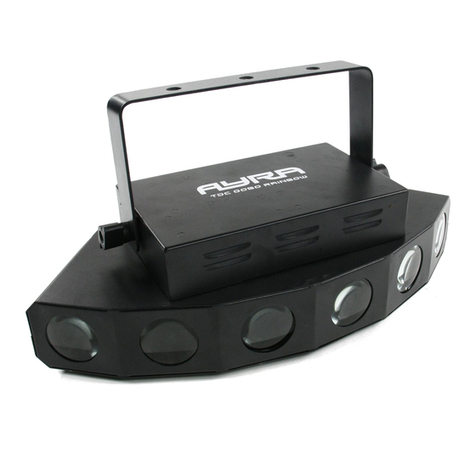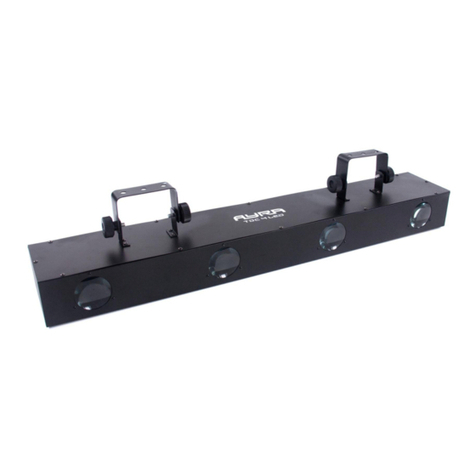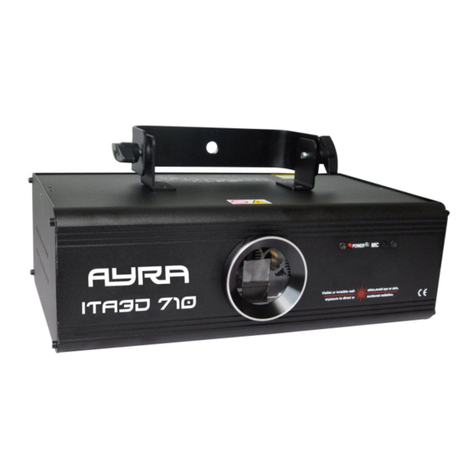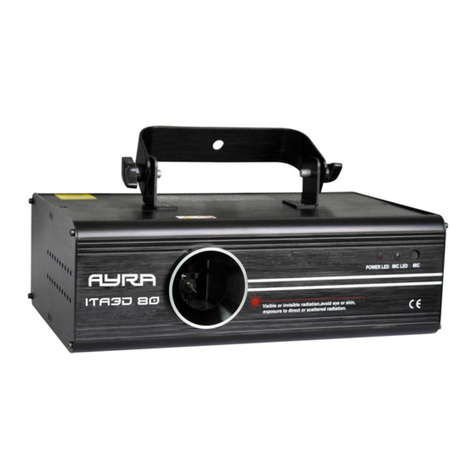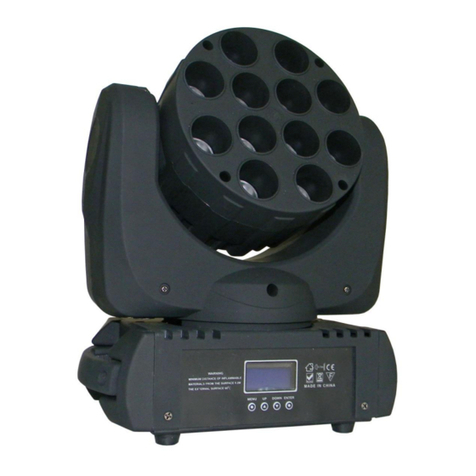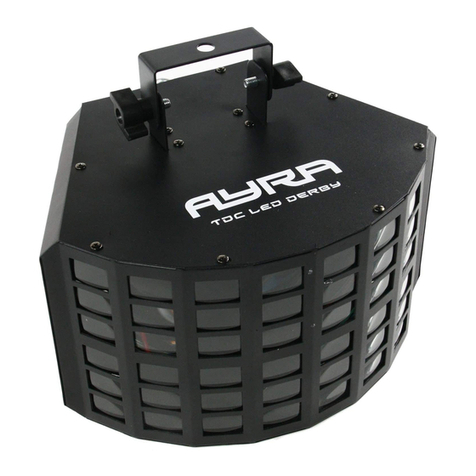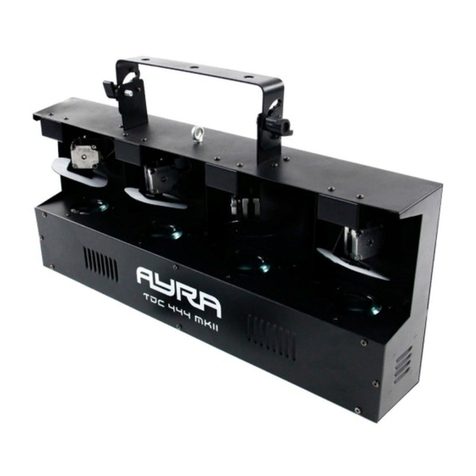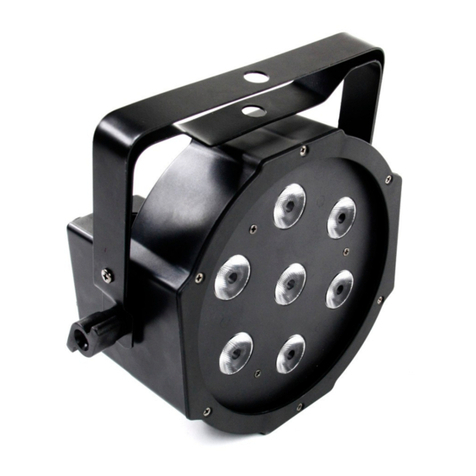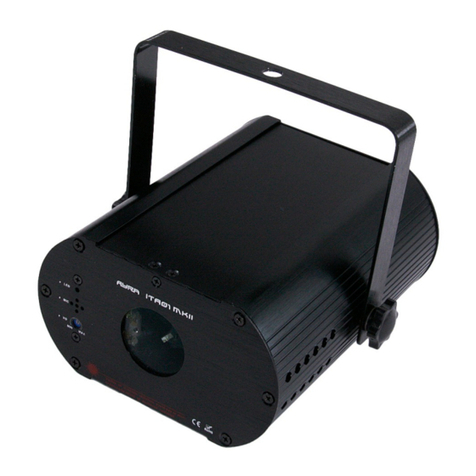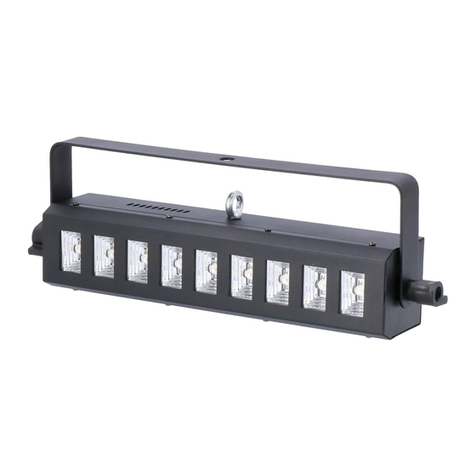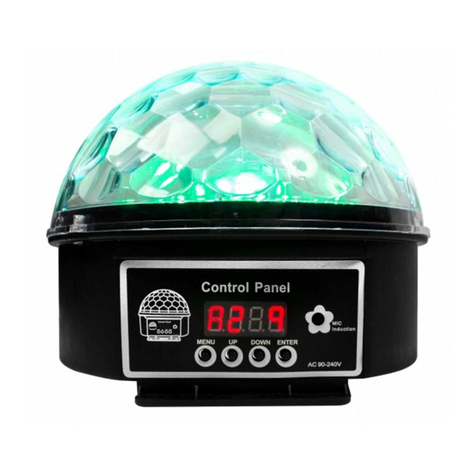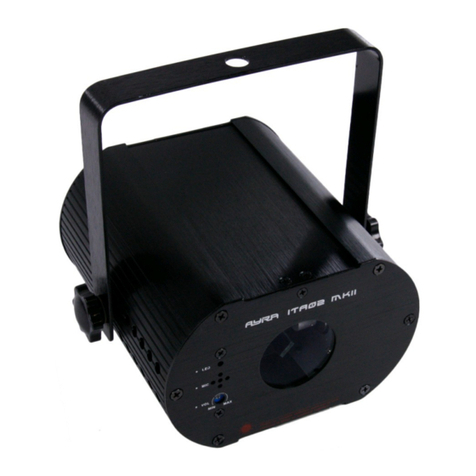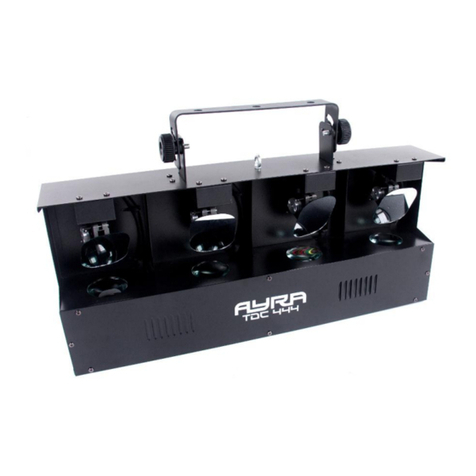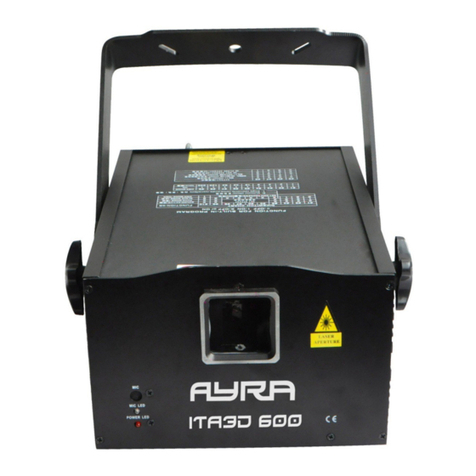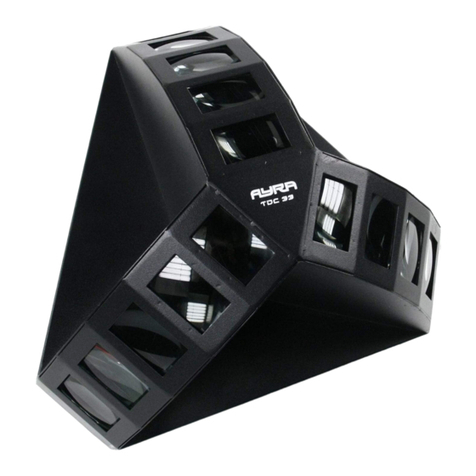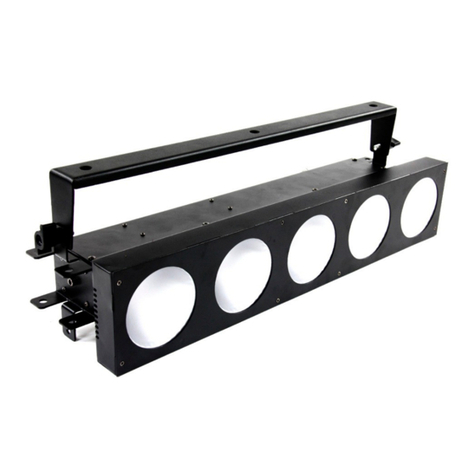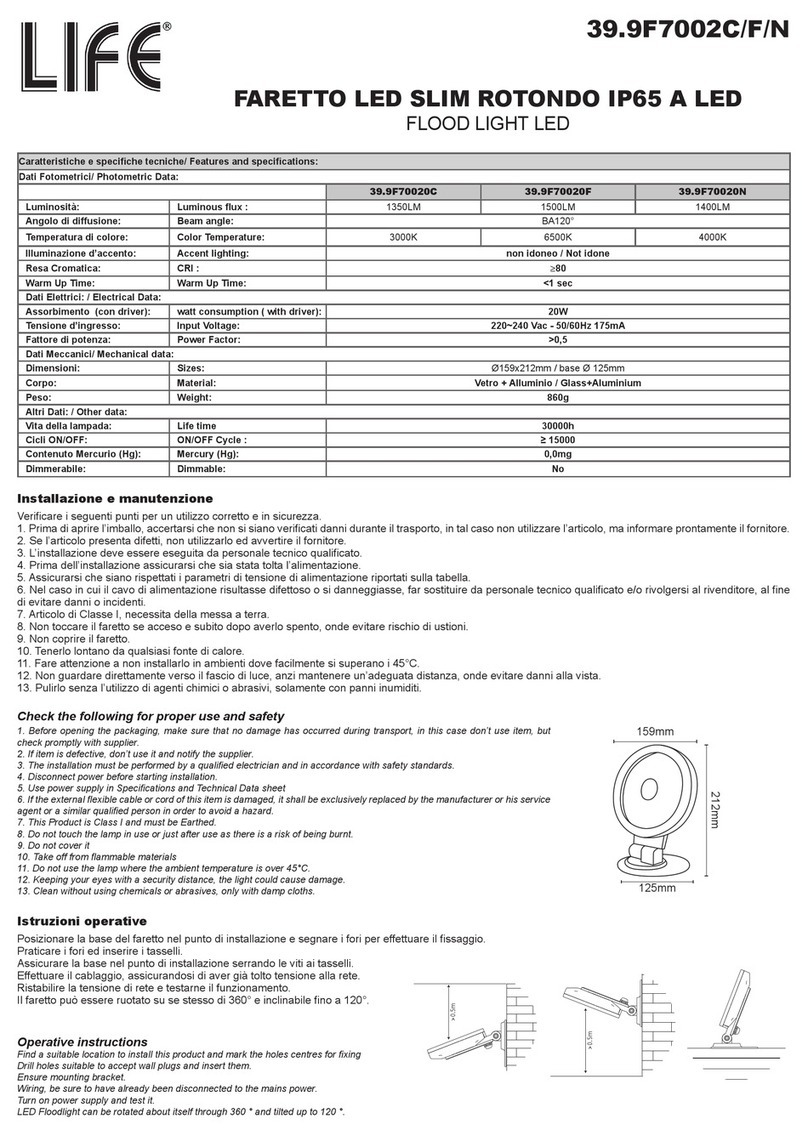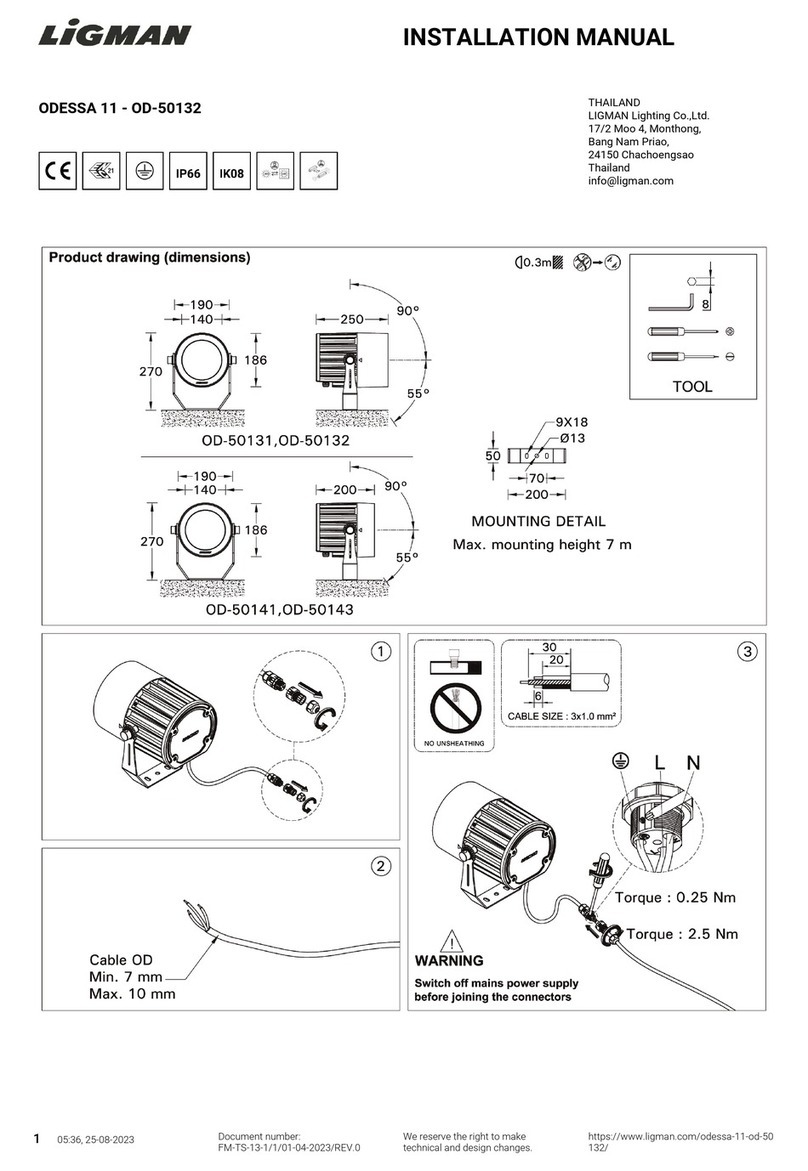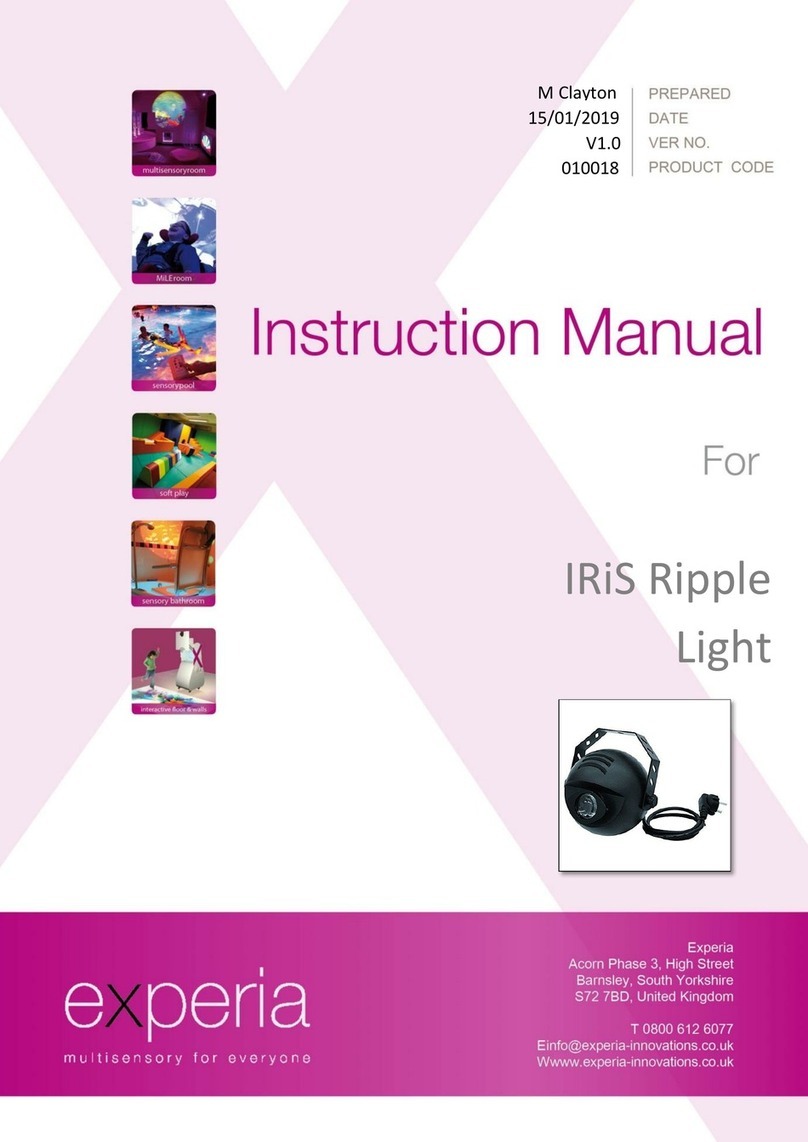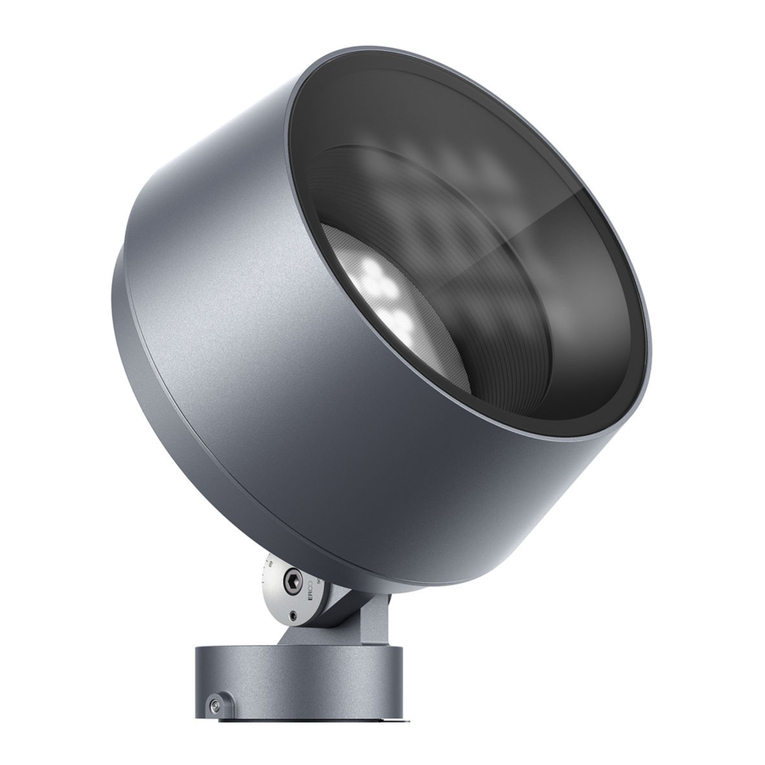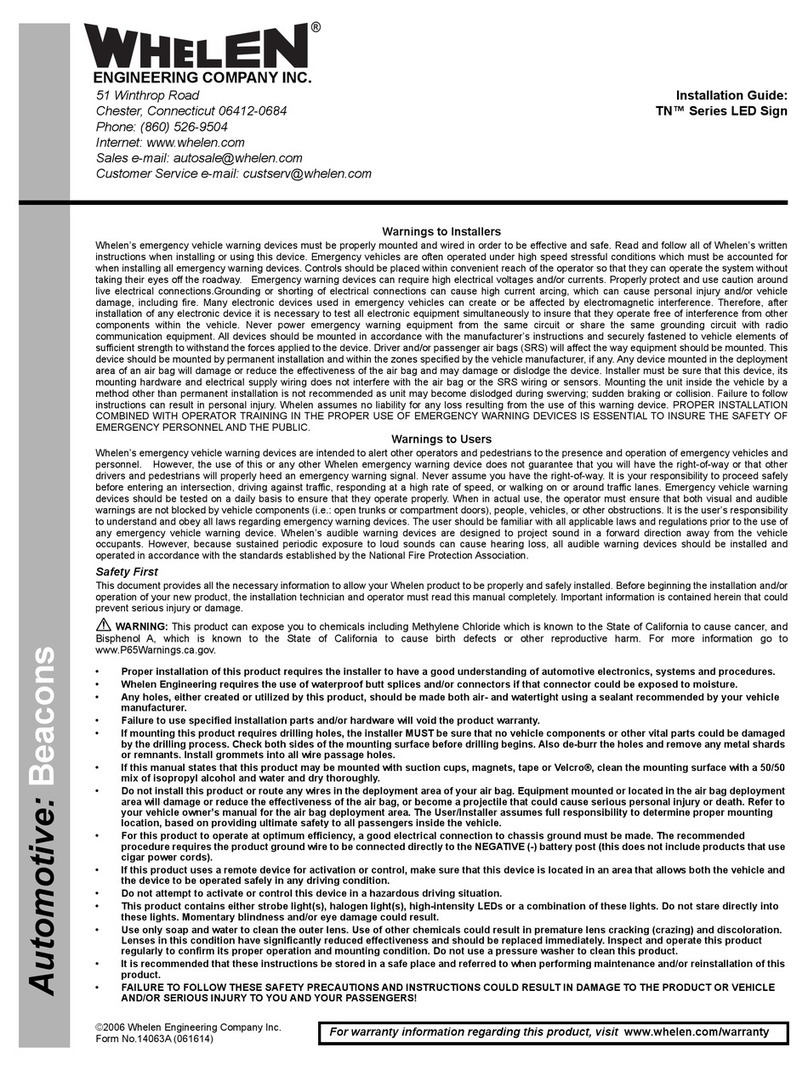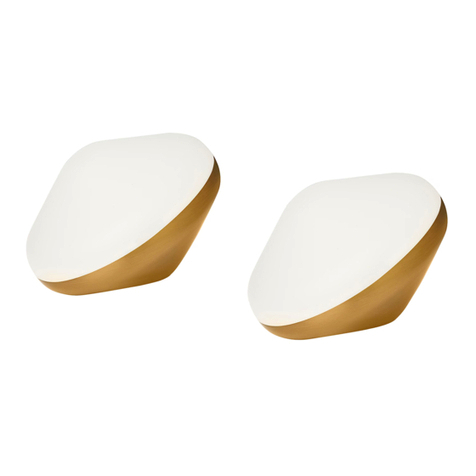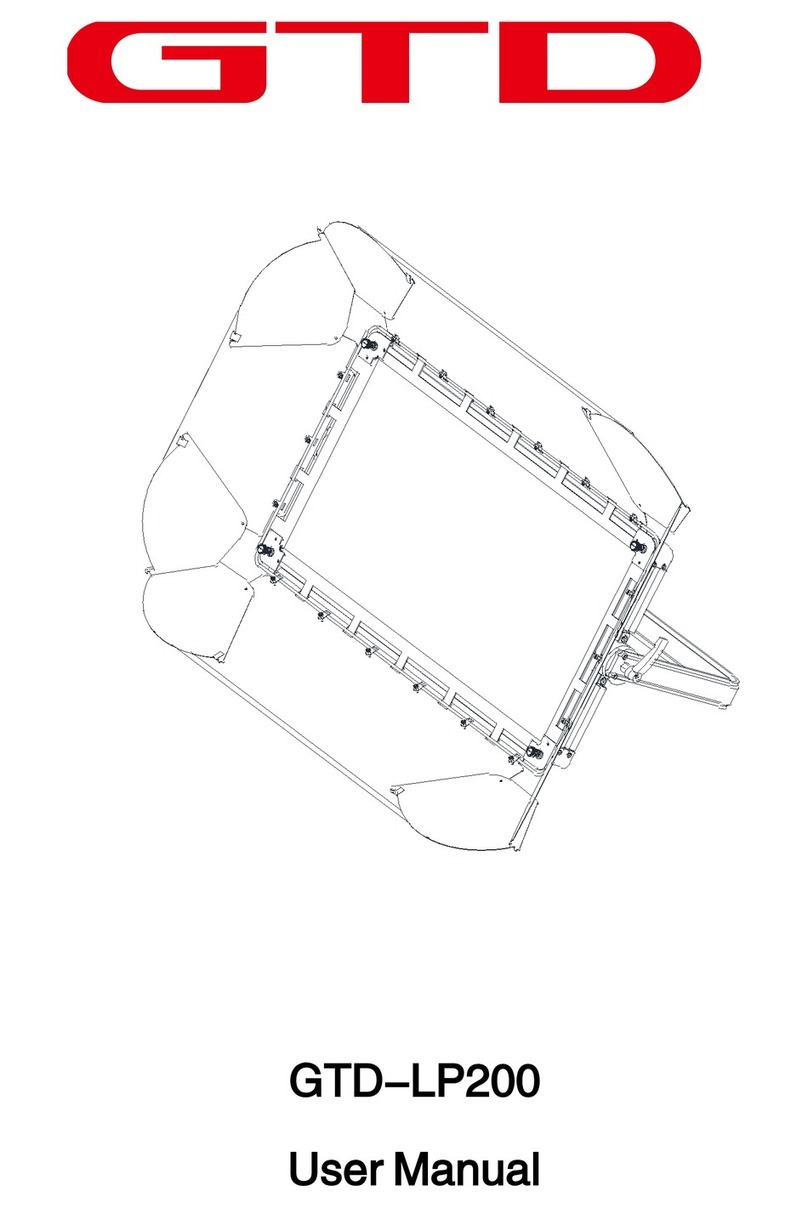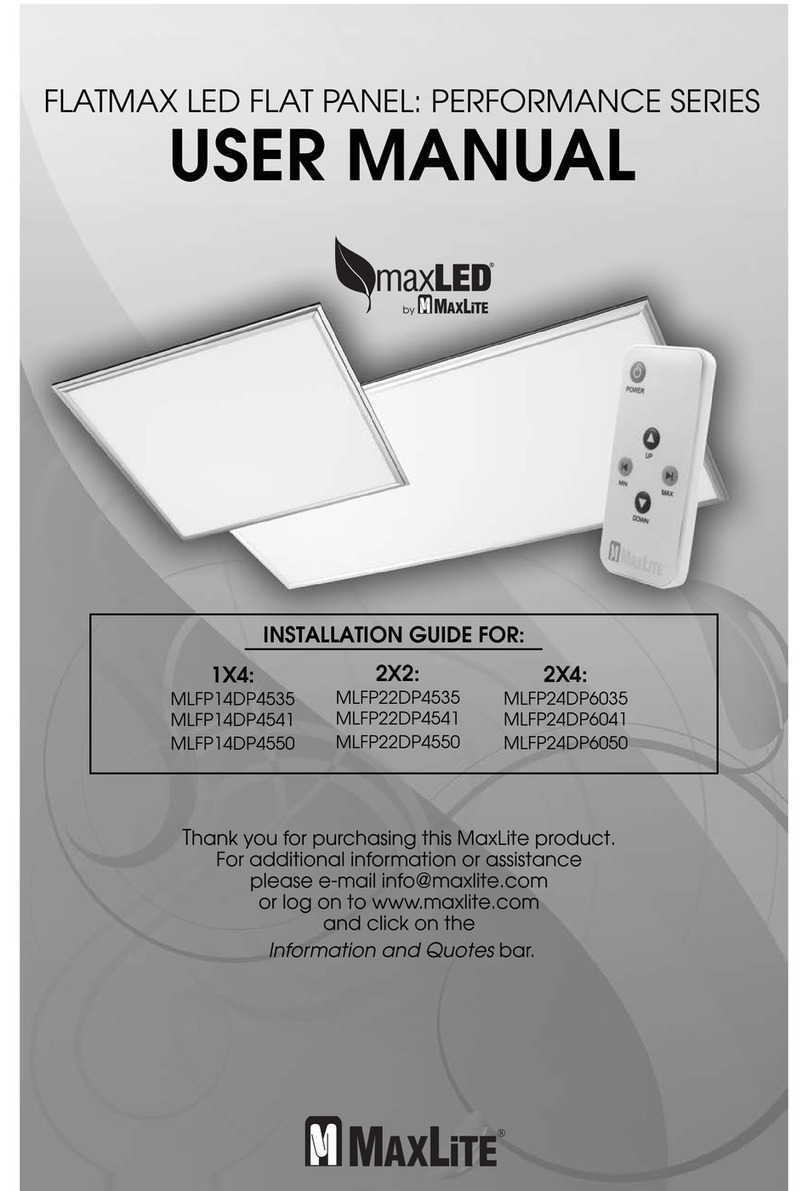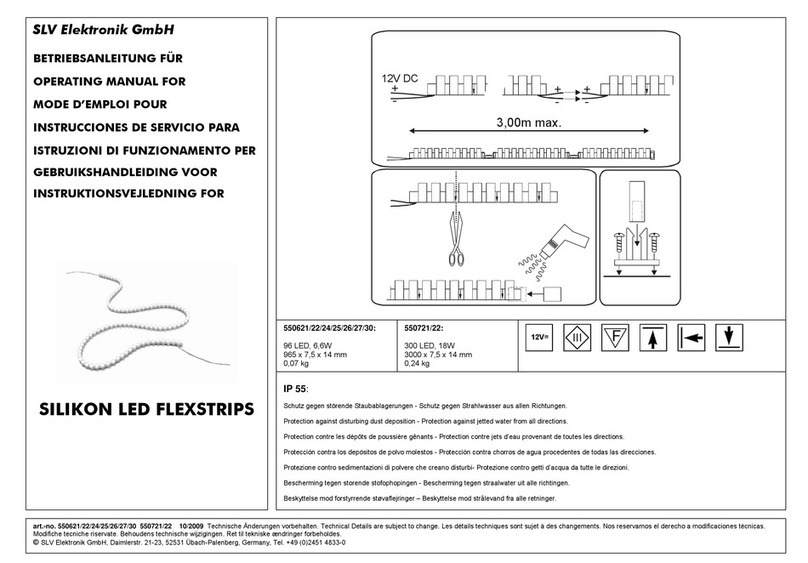5
Setting up the unit
To activate the unit, connect the included power supply with the unit and a suitable 230V, 50 Hz power
outlet. The unit will activate directly after it is plugged in to a wall outlet or other power source.
The status of the fixture is shown on the display. Certain values determine the current status and will
change when you push buttons on the control panel. The buttons each have their own function, for
easy navigation in the control panel. When connecting the unit for the first time,
Press the ‘MENU’ button to switch modes, so you can easily select the built-in master/slave, music
controlled or DMX mode. Press ‘Enter’ to confirm a setting.
Display codes:
DMX-Mode: Addr / 1 :
This value represents the DMX channel where the scanner is currently set to. 1 stands for channel 1,
but can be changed with the UP and DOWN buttons to a value from 1 to 255.
When receiving DMX data, a small red dot on the display will blink continuously, regardless of what
function is being used.
Music controlled mode: Soun:
When no DMX-signal is detected in DMX-mode, or when you select the master-mode, the unit will turn
itself into music controlled mode, displaying ‘Soun’. Use the microphone sensitivity potentiometer to
adjust the sensitivity of the internal microphone for optimal light to sound functionality. When no music
is detected, the scanner will play a slow automatic program until a beat or loud sound is detected. The
Sound mode can be activated or de-activated.
Master/Slave mode: Nast / SL 1 / SL 2:
The ‘Nast’ value stands for the master-unit, which will use the internal microphone to perform music-
controlled. This fixture will send out a signal for slave fixtures, which you may connect using standard
XLR male to XLR female cables (not included).
The slave units show ‘SL 1’ or ‘SL 2’ on the display. This way you can select a synchronous or
horizontal mirrored slave-function, for more dynamic effects.
Stand-alone mode: Shnd:
This mode uses the internal programs of the unit to perform a stand-alone light show. The TDC Cross
has 13 built-in programs, varying from 0 to 12. When the internal microphone is active, the unit will
change the beam output on every detected beat. When there is no music detected, the unit will
provide a steady and slow change of patterns.
When the internal microphone is not active, the unit will play the programs on a predefined speed.
Microphone sensitivity: Sens
The microphone sensitivity is digitally adjustable between 0 and 100. 0 is a very low sensitivity, 100 is
a very high sensitivity. Feel free to adjust this sensitivity until you have reached the optimal setting.
LED display mode: Led:
The LED display of the unit can be turned off during use, which makes your light-show more attractive,
especially if the display is visible for your audience. When using the menu-buttons the display will be
lit, but after several seconds inactivity the display will be turned off. When pressing one of the menu
buttons the display will activate itself again. The off value means display OFF, the on value means
